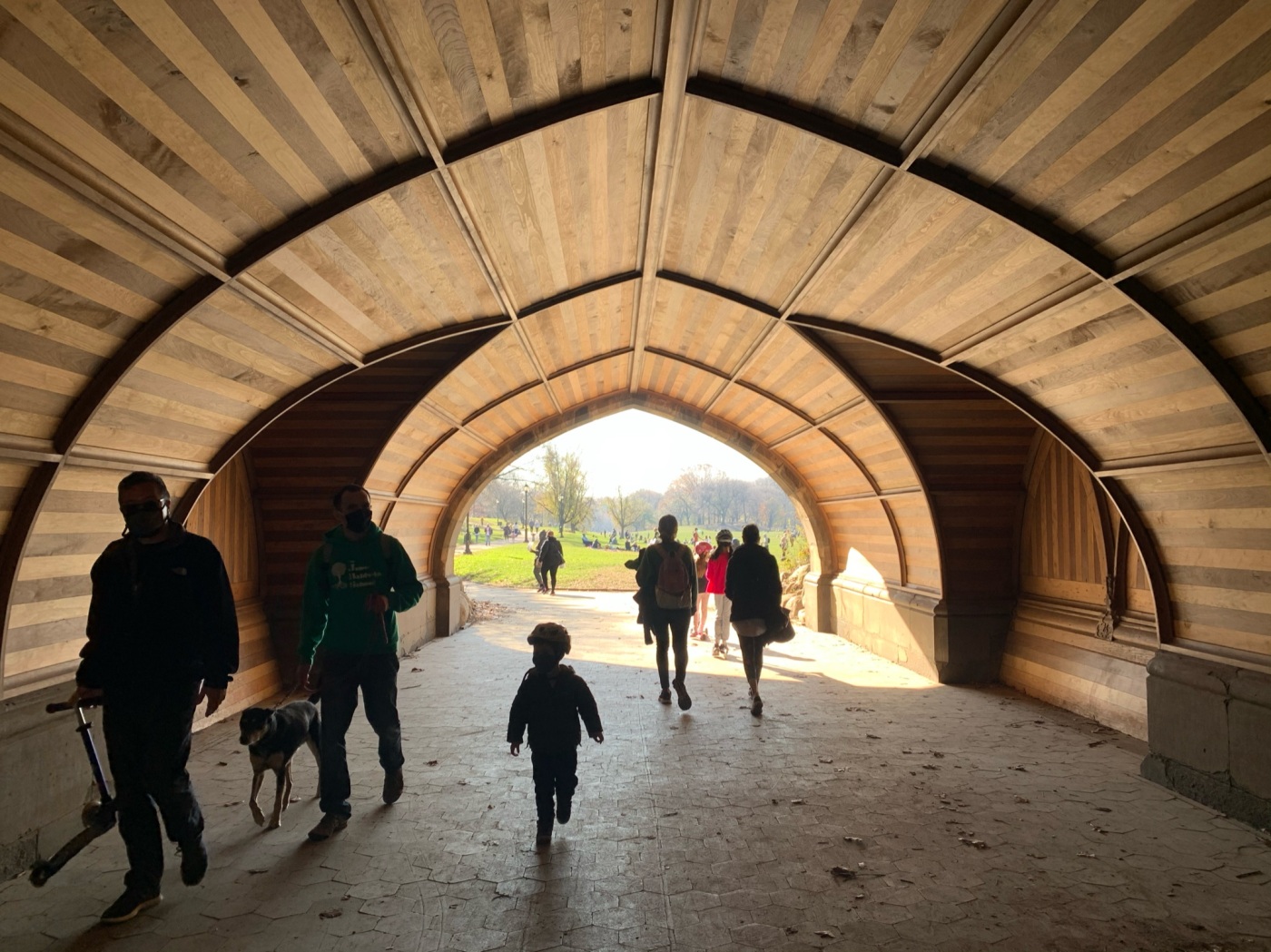Getting on for 4PM yesterday, I just couldn’t stand it anymore. I had to get out of my apartment. The sun had been teasing in and out all day. It would suffuse the front windows of my ground-level brownstone apartment with sudden, glorious light and I would make a move toward the door. Then, just as suddenly, all would go dark and gloomy, my motivation would flag, and I’d collapse on the couch again with my phone. This cycle repeated itself about five times.

But in the last hour of daylight, I rallied. With formal exercise options limited to the occasional Zoom class and some desultory stretching, the mainstay of my regime, such as it is, is walking the streets. Fortunately, I live in Brooklyn, New York City’s most architecturally rewarding borough, so it’s never dull.
I headed out of my own neighborhood of Prospect Heights and into Fort Greene, toward the grand park designed in the 1860s by Frederick Law Olmsted and Calvert Vaux, who also envisioned Manhattan’s Central Park. Fort Greene Park, top, is a 30-acre square full of majestic old trees, surrounded by blocks of brownstones and rising to a central mound that is one of the highest points in Brooklyn. The hill is topped by a towering Doric column commemorating the 12,000 who died on a British prison ship in New York Harbor during the Revolution, itself surrounded by a fine stone plaza that makes an obvious destination.
I walked along Cumberland Street, above, where rare wood frame houses with front porches, dating to the mid-19th century, are unusually numerous, and back along South Oxford, another street with much to admire, including the cheerful yellow buildings below.


I was glad to observe a couple of my favorite parkside bar/restaurants, Cafe Paulette and Walter’s, below, on corners right opposite the park, apparently thriving and filled with semi-outdoor diners on this relatively mild mid-winter Saturday.
Brooklyn was in the midst of rapid transformation from low-rise to hi- when the pandemic hit. As much as I would prefer it to remain just as it looked 150 years ago, no one sought my opinion. Some construction projects seem to have stalled out; others seem to be proceeding apace.
Although still ludicrously out of scale with the surrounding four-story row houses, I find some of the new residential towers bearable — the masonry ones that recall the stocky, substantial buildings of the Art Deco era. The really tall glass towers going up along Atlantic Avenue offend me. They don’t belong here. They are ugly to my eye and likely to age poorly, but, again, I wasn’t asked.
My final reward for rousing myself to action was a vibrant sliver of sunset as I headed back to my sofa. The late-day light glinting off the western facades of the gargantuan new buildings made me think, so be it. The world moves on.

































